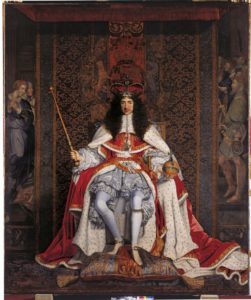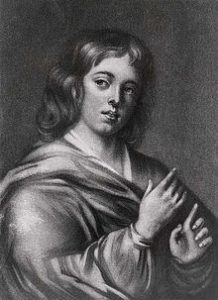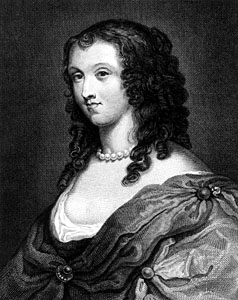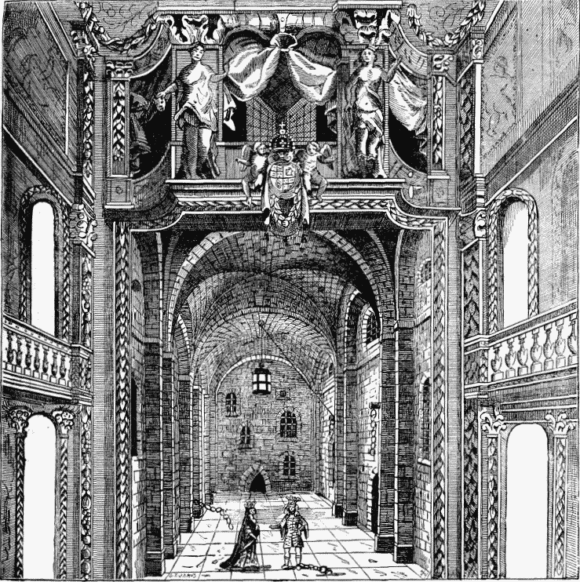CoHo’s Artistic Fellow and Dramaturg Jessica Dart will share her creative research on Playhouse Creatures in weekly blog posts during the run, or the full pdf is available for download here: PlayhouseCreaturesEducation.pdf
The Restoration (1660-1688)
 The Restoration period marked the return of Charles II (at right) as the English monarch following Oliver Cromwell’s Commonwealth. Under Cromwell’s Puritan rule (also known as the Interregnum, or the period between reigns), theatres were closed, performance and spectatorship were outlawed, speech was regulated, excessive holiday celebrations were suppressed, printing and distribution of non-government approved books and documents was prohibited, “monuments of superstition and idolatry” were demolished, and conservatism reigned.
The Restoration period marked the return of Charles II (at right) as the English monarch following Oliver Cromwell’s Commonwealth. Under Cromwell’s Puritan rule (also known as the Interregnum, or the period between reigns), theatres were closed, performance and spectatorship were outlawed, speech was regulated, excessive holiday celebrations were suppressed, printing and distribution of non-government approved books and documents was prohibited, “monuments of superstition and idolatry” were demolished, and conservatism reigned.
When Charles II was restored to the throne, he brought along his flamboyant personal tastes, influenced by the time he spent exiled in France. His liberalism was the perfect antidote to the bleak, austere, and highly regulated Commonwealth. He did away with oppressive laws and reopened the theatres, this time allowing women to appear onstage legally.
Restoration Theatre
 Prior to the closing of theatres during the Interregnum, it was illegal for women to appear onstage. Women’s roles were played by young men or boys in drag, as it was considered indecent and inappropriate for “real” women to present themselves in such a public way. Once Charles II was restored to the throne, women were no longer prohibited from appearing on the public stage. The first woman appeared onstage (legally) on December 8, 1660 as Desdemona in Othello. There is some dispute as to which actress this was, though the role and the date are certain. Soon after the law changed, the demand for actresses outstripped the supply. Young men such as Edward Kynaston (left) continued to play female roles as they had done prior to the Interregnum. But as the public grew accustomed to seeing “real” women onstage and more women became actresses, the need for and acceptance of men in female roles waned.
Prior to the closing of theatres during the Interregnum, it was illegal for women to appear onstage. Women’s roles were played by young men or boys in drag, as it was considered indecent and inappropriate for “real” women to present themselves in such a public way. Once Charles II was restored to the throne, women were no longer prohibited from appearing on the public stage. The first woman appeared onstage (legally) on December 8, 1660 as Desdemona in Othello. There is some dispute as to which actress this was, though the role and the date are certain. Soon after the law changed, the demand for actresses outstripped the supply. Young men such as Edward Kynaston (left) continued to play female roles as they had done prior to the Interregnum. But as the public grew accustomed to seeing “real” women onstage and more women became actresses, the need for and acceptance of men in female roles waned.
Though having women onstage became the norm, it was thought that no “respectable” women pursued acting careers. It was assumed that women who displayed themselves on the public stage were whores with questionable morals. According to Elizabeth Howe’s The First English Actresses, “The assumption that the word ‘actress’ stood for ‘prostitute’ rapidly became a self-fulfilling prophecy. An unprotected woman would have found it impossible to avoid sexual advances if she worked in the theatres. Men were free to go behind the scenes and watch the actresses dressing.” Charles II issued an order to prevent non-company members from entering the backstage area as a protective measure for the actresses, but this rule was largely ignored by men who felt they were entitled to access.
Most actresses adopted stage names consisting of “Mrs.” and a surname, even if they weren’t married. The “Mrs.” title implied moral propriety and a created a somewhat credible barrier to unwanted male attention. However, most actresses were conflated with the roles they played onstage – object of desire, rape victim, lusty wench, etc. – so the perception of actress as whore continued. It didn’t help that actresses were often expected to play “breeches roles,” wherein they wore men’s clothing that exposed their usually-covered legs, much to the pleasure of the largely male audience.
The acting style associated with Restoration theatre developed from a combination of Elizabethan/Shakespearean style (standard in England before the theatres were closed) and French theatre of the 17th century. The older, generation of actors who working onstage before the Interregnum were the authorities when it came to training the newer, younger generation. Charles II’s preference for all things French (architecture, literature, music, theatrical style, fashion) caused prominent theatre managers like Thomas Betterton to study and incorporate French theatrical traditions. In the simplest of terms, actors were taught that every emotion (humor or passion) was tied to the body in some way – a gesture, an eye shift, a nostril flare, pronunciation, tears, sighs, hand wringing, etc. Negative emotions were expressed with the left hand, positive with the right.
From Rehearsal From Shakespeare to Sheridan by Tiffany Stern:
Pronunciation and gesture were broadly standardized, though comedy and tragedy seem to have used different levels of convention…tragedy seems to have demanded a more clearly stylized mode of behavior…Action and pronunciation were still valued separately, though actors were only judged “good” if they had equal skill in both…Though it is difficult to determine quite what theatrical speech was like, particular ways of speaking give something of a clue – there was “rant” (angry pronunciation), “cant” (whining or loving pronunciation), and “tone” (cadenced, musical pronunciation used for making declamations)…these are parodied in comedies and adhered to in tragedies…Instruction was imitative in its nature, and many established actors claimed to have based their best performances on patterns laid down by other actors – generally the actors who had first “instructed” them.
Male actors who originated roles continued to “own” and play them throughout their careers, even when they had grown old. On the other hand, female actresses usually didn’t own their roles, which allowed them to be replaced by younger women,
Because most theatres were destroyed during the Interregnum, Restoration playing spaces were created in abandoned tennis courts or former bear pits, with more elaborate venues built later. The open air theatres (such as The Globe) of the Elizabethan era were no more. The new era demanded lavish buildings containing proscenium playing spaces and elaborate sets lit by candle. There were four major Restoration theatres in London. The main theatre shown in Playhouse Creatures is a version of the Drury Lane Theatre. In the 17th and 18th centuries, it burned down several times and was rebuilt each time in the same approximate location. Drury Lane is still in operation in London today.
The “playing season” in public theatres lasted from September or October through June, with theatres open six days a week. Theatres would close for one week before Easter, each Friday during Lent, if a member of the royal family died, or as a precaution against the plague. Within a single season about 50 plays would be performed, with approximately 10 of them being new works.
 Women playwrights became more prominent during the Restoration. Aphra Behn (left), the first woman writer recognized in English history, is known for her farcical style, bawdy content, and feminist tone. Mrs. Behn created roles for actresses she admired, including the role of Angelica Bianca in The Rover for Nell Gwynn. Mrs. Behn served as a spy for Charles II in Antwerp before becoming a playwright. She was awesome.
Women playwrights became more prominent during the Restoration. Aphra Behn (left), the first woman writer recognized in English history, is known for her farcical style, bawdy content, and feminist tone. Mrs. Behn created roles for actresses she admired, including the role of Angelica Bianca in The Rover for Nell Gwynn. Mrs. Behn served as a spy for Charles II in Antwerp before becoming a playwright. She was awesome.





